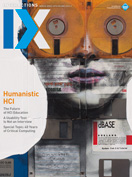Authors:
Harshit Agrawal, Udayan Umapathi, Robert Kovacs, Johannes Frohnhofen, Hsiang-Ting Chen, Stefanie Mueller, Patrick Baudisch, Calvin Rubens, Sean Braley, Antonio Gomes, Daniel Goc, Xujing Zhang, Juan Carrascal, Roel Vertegaal, Yu-Hsuan Huang, Tzu-Chieh Yu, Pei-Hsuan Tsai, Yu-Xiang Wang, Wan-ling Yang, Hao-Yu Chang, Yu-Kai Chiu, Tsai Yu-Ju, Ming Ouhyoung, Munehiko Sato, Rohan Puri, Alex Olwal, Deepak Chandra, Ivan Poupyrev, Ramesh Raskar
Protopiper is a computer-aided handheld fabrication device that allows users to sketch room-sized objects at actual scale. The key idea behind Protopiper is its main building material: It uses adhesive tape formed into tubes rather than extruded plastic or photopolymer lines. Since the resulting tubes are hollow, they offer excellent strength-to-weight ratio and thus scale well to large structures. By allowing users to sketch and prototype room-sized objects at actual scale, users can verify their designs during prototyping. For example, they can make sure that objects fit with the room or with their bodies.
http://hpi.de/baudisch/projects/protopiper.html
https://www.youtube.com/watch?v=beRA4sIjxa8
Agrawal, H., Umapathi, U., Kovacs, R., Frohnhofen, J., Chen, H-T, Mueller, S., and Baudisch, P. Protopiper: Physically sketching room-sized objects at actual scale. Proc. of the 28th Annual ACM Symposium on User Interface Software & Technology. ACM, New York, 427–436, 2015. DOI: http://dx.doi.org/10.1145/2807442.2807505
Harshit Agrawal, Udayan Umapathi, Robert Kovacs, Johannes Frohnhofen, Hsiang-Ting Chen, Stefanie Mueller, and Patrick Baudisch, Hasso Plattner Institute
[email protected]
 |
Protopiper is a handheld physical sketching device that forms adhesive tape into tubes as its main building material. |
 |
Working at actual scale allows discovering design mishaps (e.g., ergonomic issues) during prototyping. |
BitDrones allows users to explore virtual 3D information by interacting with physical self-levitating building blocks. It is a first step toward interactive programmable matter—materials capable of changing their 3D shape in a programmable fashion—via swarms of nano quadcopters. Researchers at the Human Media Lab created three types of BitDrones: PixelDrones are equipped with one LED and a small dot-matrix display. ShapeDrones have a lightweight mesh on a 3D-printed geometric frame and serve as building blocks for complex 3D models. And DisplayDrones lift a curved flexible high-resolution touchscreen and a forward-facing video camera.
www.hml.queensu.ca/bitdrones/
https://youtu.be/hHBYMWc3ux8
Rubens, C., Braley, S., Gomes, A., Goc, D., Zhang, X., Carrascal, J-P, and Vertegaal, R. BitDrones: Towards self-levitating programmable matter via interactive 3D quadcopter displays. Proc. of ACM UIST'15 User Interface Software and Technology Symposium. ACM Press, 2015.
Calvin Rubens, Sean Braley, Antonio Gomes, Daniel Goc, Xujing Zhang, Juan Pablo Carrascal, and Roel Vertegaal, Human Media Lab, Queen's University
[email protected]
 |
Users can explore information by interacting with self-levitating 3D building blocks. |
 |
PixelDrones have one LED and a small dot-matrix display. |
When using a conventional stereo microscope, users inevitably move their head away from the microscope to retrieve information. This increases the risk of losing focus and becoming fatigued during, for example, microsurgeries. Scope+, a stereoscopic video see-through augmented reality microscope, was created to solve these problems and to improve users' microscopic stereo vision. With a specially designed interactive guidance system, Scope+ provides an intuitive user experience with no special training process needed before using it.
http://scope.plus
https://youtu.be/rmohFEAreUs
Tsai, P-H, Huang, Y-H, Yu, T-C, and Ouhyoung, M. Video see-through augmented reality stereo microscope with customized interpupillary distance design. SIGGRAPH Asia 2015 Posters. ACM, New York, 2015, Article 35. DOI: http://dx.doi.org/10.1145/2820926.2820960
Huang, Y-H, Yu, T-C, Tsai, P-H, Wang, Y-X, Yang, W-L, and Ouhyoung, M. Scope+: A stereoscopic video see-through augmented reality microscope. SIGGRAPH Asia 2015 Emerging Technologies. ACM, New York, 2015, Article 21. DOI: http://dx.doi.org/10.1145/2818466.2818476
Yu-Hsuan Huang, Tzu-Chieh Yu, Pei-Hsuan Tsai, Yu-Xiang Wang, Wan-ling Yang, Hao-Yu Chang, Yu-Kai Chiu, Tsai Yu-Ju, and Ming Ouhyoung, National Taiwan University,
[email protected]
 |
Scope+ uses augmented reality to improve users' microscopic stereo vision. |
As interactions with handheld devices and everyday objects become increasingly common, a more seamless and effortless identification and personalization technique will be essential for an uninterrupted user experience. Zensei is a versatile technique for effortlessly identifying and personalizing objects using bioimpedance sensing through an array of electrodes. Bioimpedance information allows us to identify the physiological and behavioral aspects that are unique to a user and customize or personalize an experience for them. We created a Zensei-powered interaction prototype to showcase its capabilities and to explore various interaction scenarios.
Sato, M., Puri, R.S., Olwal A., Chandra, D., Poupyrev, I., and Raskar, R. Zensei: Augmenting objects with effortless user recognition capabilities through bioimpedance sensing. Adjunct Proc. of the 28th Annual ACM Symposium on User Interface Software & Technology. ACM, New York, 2015, 41–42. DOI: http://dx.doi.org/10.1145/2815585.2817786
Munehiko Sato, MIT Media Lab,
[email protected]
Rohan S. Puri, MIT Media Lab,
[email protected]
Alex Olwal, MIT Media Lab
Deepak Chandra, Google
Ivan Poupyrev, Google
Ramesh Raskar, MIT Media Lab
(in collaboration with Yosuke Ushigome and Lukas Franciszkiewicz at Takram London)
 |
A Zensei-equipped smartphone instantly recognizes different users through their hands' electrical properties. |
 |
Zensei is a fundamental sensing technology that captures the body's electrical frequency properties through an array of electrodes. |
©2016 ACM 1072-5520/16/03 $15.00
Permission to make digital or hard copies of all or part of this work for personal or classroom use is granted without fee provided that copies are not made or distributed for profit or commercial advantage and that copies bear this notice and the full citation on the first page. To copy otherwise, to republish, to post on servers or to redistribute to lists, requires prior specific permission and/or a fee.
The Digital Library is published by the Association for Computing Machinery. Copyright © 2016 ACM, Inc.








Post Comment
No Comments Found